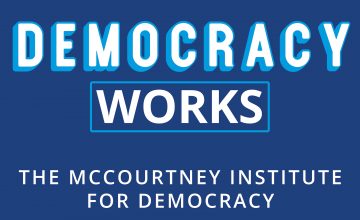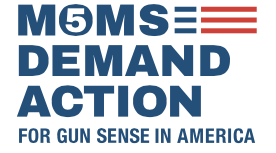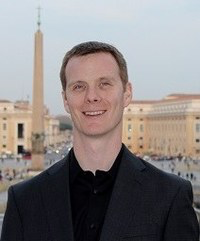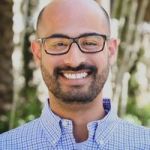Podcast: Play in new window | Download | Embed
Subscribe: Apple Podcasts | Spotify | Email | TuneIn | RSS | More

We have access to more information now than at any other time in history, but we trust that information less than ever before. A Gallup survey recently found that 58 percent of respondents felt less informed because of today’s information abundance. As with a lot of things in life, too much of a good thing might not be so good after all.
If you’ve followed any of the recent news about Facebook — from Mark Zuckerberg’s comments about Holocaust survivors to the decision to ban InfoWars — you’ve probably heard the company make claims about giving its community a voice and other things that sound very democratic. However, as Matt Jordan explains in this episode, that is not the case at all.
At the end of the day, Facebook is a company and its goal is to make a profit. The result of that, Matt argues, is an algorithm-fueled avalanche of information that mixes news with opinion and fact with fiction to reinforce existing thoughts and feelings rather than exposing us to new ideas and perspectives.
Matt has also spent time studying the history of the term fake news and found that it goes back much farther than Donald Trump. He talks about how fake news in 2018 looks different than it did in 1918 and what responsibility journalists and news consumers have to push back against it.
Matt is an associate professor of media studies at Penn State and co-director of the Social Thought Program. For a look at how journalists are working in this media landscape, check out our interview from last season with Halle Stockton of PublicSource, a nonprofit news organization in Pittsburgh.
Note: This episode was recorded before Alex Jones and InfoWars were banned from Facebook, YouTube, iTunes, and other platforms.
Recommended Reading
Matt’s article on the history of fake news
How can democracy thrive in the digital age? From the Knight Foundation Commission on Trust, Media, and Democracy
Discussion/Reflection Questions
- Do you think that Facebook’s mission of building community is a cover up for collecting and selling data?
- Have the scandals surrounding Facebook and other social media over the past year changed your view of the platforms or how you use them?
- What role should social media play in a democracy?
- Do you think we’ll ever move away from a scenario where people use social media as their primary news source?
Interview Highlights
[3:23] How did you get drawn towards studying the concept of fake news or fake information?
Jordan: I’m always looking to see how structure of media are impacting cultural conversations. This concept of fake news has become a coercive presence in our media that has continued through 2016 and into 2018.
[4:20] Has the impact of fake information and news continued to today?
Jordan: It has continued through the body of the car into the interior.
[4:35] Can you tell us about your work chronically the history of the term “fake news”?
Jordan: Despite Trump claimed the credit for creating the term, which is a very “Trump” move, it actually came about with the end of the 19th century as a way to lie in media. It was a creation of the muckrakers who used misleading and fake information in the media to impact how the conglomerates at the time controlled media. They came up with this term to discredit both completely fake reporting as well as reporting that left out important information on a particular report. Therefore, the label of “fake news” became something that liberals and progressives used to discredit the large for profit news sources.
[6:00] Are there examples of the use of fake news in this manner today?
Jordan: I think you can look at Fox News and use the label of “fake news” to describe what they do. For example, they often times omit important information from their daily coverage. There will be a major story of the Mueller investigation but Fox will spend their time covering a small student protest on a college campus and the push back they got from liberals as an example of liberals not allowing free speech on campus.
[7:40] Media has changed considerably over the last one hundred years. What impact has sea ranch engines like Google had on the development of fake news?
Jordan: One example of how these creations have impacted our media consumption is a term that Mark Zuckerberg likes, which is information that is “relevant to us”. This is information that we would be predisposed to believe gives our personal sensibilities and opinions. This creates feedback loops where we’re just being exposed to information that we tend to believe or agree with ideologically. The new profit incentive is to keep us interacting.
[10:41] How do media outlets balance this dedication to the truth while allowing all people to access their platform?
Jordan: Facebook is shrewd enough that all of their talking points are related to democratic ideals. For example, their use of the term “voices” referees to the democratic ideal that we should allow more voices into the public discussion on an particular issue. This is a struggle for people to talk about democratic theory. While we say we are going to have “voices” involved in a conversation is not to say that this is inherently going to lead to a fruitful or productive conversation on a topic just because more sides are represented. Do we need more wars? Do we need more Alex Jones out there? Probably not. It is important to remember that outlets like Facebook benefit form having more Alex Jones type characters getting people going emotionally. This makes the media more sticky. It is interesting when they use these democratic ideals of “voices” to cover up their own interests, which is to create more emotional news which increase their profits.
[12:33] Given that, what do you see as the path forward?
Jordan: Whenever you have an explosion of new media formats and sources of information, you’re going to have an explosion of misinformation and fake news. At each time this has happened in history, the government has had to come in and regulate who can use the platforms to spread information. Therefore, those who say that the market can help clean up these news sources are simply wrong. Mostly because the markets have little financial incentive to limit certain sources of media as part of cleaning it up.
[15:36] In the Trump administration, do you see a place where government oversight can take place?
Jordan: The only way this would happen is if the democrats sweep in the midterms and the Trump administration ends up on the back end of the national mood. This would mean they would want to limit messages to try to get on the right side again. I simply don’t see this happening. The right has done a good job of making people think that regulation is simply bad across the board. It is going to be a difficult battle to get people to warm up to the idea of introducing government regulation to current mass media platforms like Facebook. The system we have today of fact checking media simply can’t keep up. For example, I heard in a recent sort of ad hoc way that we receive more information today than those alive in the 15th century would receive in an entire lifetime.
[19:17] What responsibility do journalists have in these situations?
Jordan: They have a huge responsibility. The purpose of freedom of the press has always been to limit the ability of those in power to get away with lying to the people. However, in order for them to get the public’s trust back, they have to show that they are working to find the truth rather than to protect the interest of their shareholders. The future for these journalists is at the local level. People really love their local news. While national coverage is an emotional wrestling match, it is the coverage of local affairs that people can relate to which gets them to come out and get involved in government. I think local media that can inform people of things that directly relate to them in their communities is how journalism can lead the fight against the current media climate that fake news is flourishing in.


 If you’ve been to a book store or the library lately, then you’ve probably seen at least a few books on democracy on the shelves. The 2016 presidential election spurred a lot of conversation about the current state of our democracy and where things go from here. These books are not what most people would call beach reading, but they are important to understanding what’s happening in the U.S. and around the world right now.
If you’ve been to a book store or the library lately, then you’ve probably seen at least a few books on democracy on the shelves. The 2016 presidential election spurred a lot of conversation about the current state of our democracy and where things go from here. These books are not what most people would call beach reading, but they are important to understanding what’s happening in the U.S. and around the world right now.



















